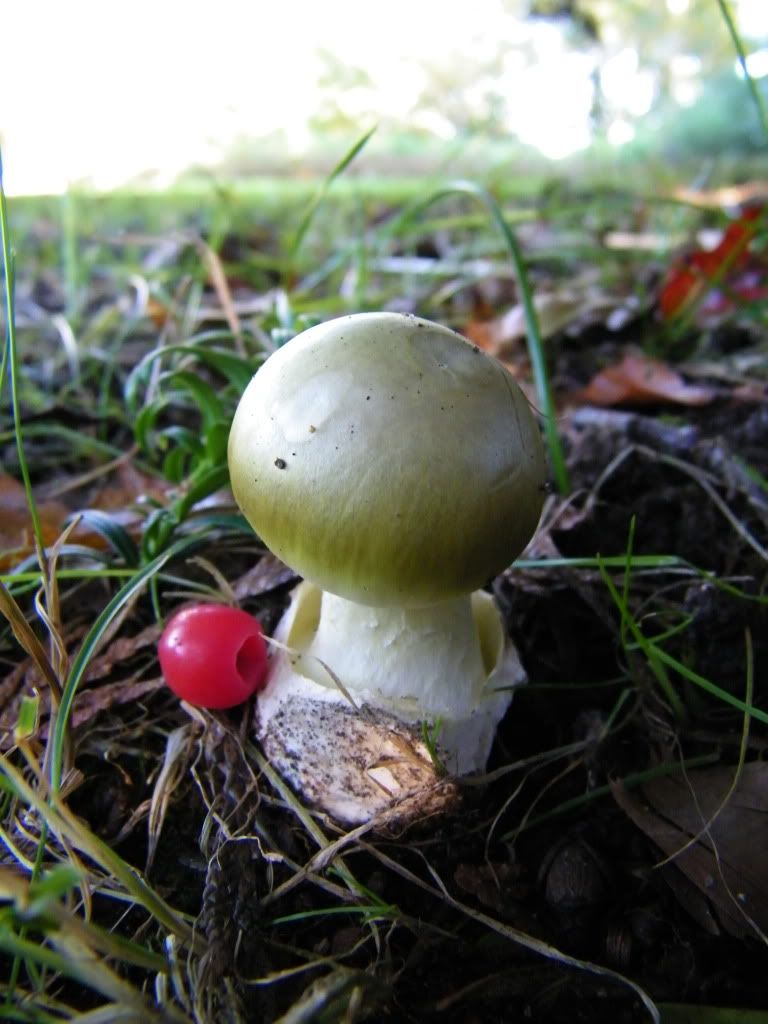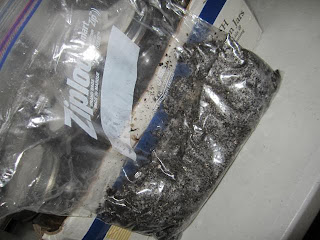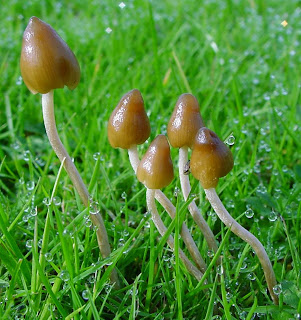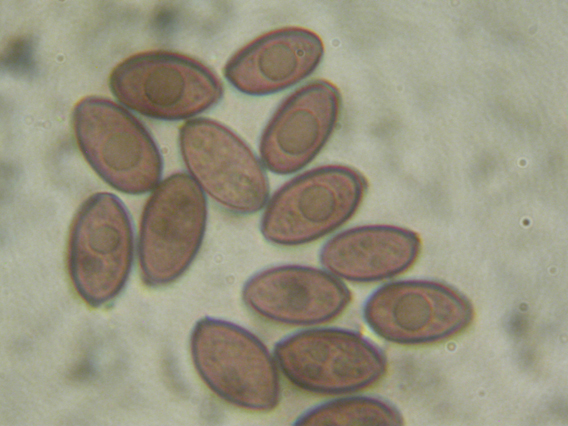The Death Cap - By Erik Blair
We've all heard horror stories of people eating poisonous, wild mushrooms with fatal results. The Death Cap Mushroom or Amanita phalloides, is responsible for 90% of these tragic deaths, and is the number one killer mushroom world wide. Originally from Europe, it has grown wide spread and can now be found all over the world, from Australia to North America and spreading. The species travels through its
ectomycorrhiza relationship with trees such as Oak, Beeches, Chestnuts, Horse Chestnuts, Birches, Pines, and many others. When these trees are imported and planted for ornamental purposes, they can bring with them a deadly (though beneficial to the tree) stowaway.

The Death Cap is a very beautiful and charismatic looking mushroom to stumble upon. It can grow fairly large, and emerges from a thick, egg-like vulva. It has a light olive brown cap, white stalk with white veil. The cap is usually rounded but flattens out with age to allow for easy escape for it's white spores. In it's primordial form, it can appear to be a small white egg in the ground, resembling the common Puffball Mushroom, which is considered a worthy edible by some mushroom pickers. Have caution when picking Puffballs to eat. Cutting them in half should reveal a soft, smooth, marshmallow-like interior. If when you cut it in half you see the obvious form of a young mushroom eager to hatch, drop it immediately and wash your hands before handling any other mushrooms you may be considering ingesting. The poison will not transfer through your skin, but may rub off onto other surfaces including your mouth and eyes. In some rare cases where the population of Death Cap mushrooms is very concentrated and the watering of lawns is done in excess, the mushroom toxins have actually seeped into neighborhood streams and accounted for the poisoning and deaths of several dogs.

The Death Cap contains many different and potentially harmful chemicals, the one most likely responsible for the destruction of the liver, kidneys, and red blood cells is called alpha-Amanitin. It usually takes between 10 and 24 hours for the first poisoning symptoms (diarrhea & cramps) to start, long after the stomach would have digested the mushroom completely. Typically these first symptoms will pass, often making the victim to feel their health is improving. Usually by the 4th or 5th day the liver and kidneys are severely affected, and death follows usually at approximately 1 week after ingestion. If caught soon enough, and depending on the amount ingested, Death Cap poisoning can be treated at a hospital by using various drugs. In larger quantities however, usually a liver and/or kidney transplant(s) is the last resort for survival.

If you do ever find yourself in a situation where you have ingested a death cap, seek immediate medical attention. Penicillin and hyperbaric oxygen are usually quite effective as treatment and increase ones chances for survival. There is also a herb called Milk Thistle (Silybum Adans) which when administered within the first 48 hours after ingestion of said mushroom, increases not only the likelihood of survival, but can actually prevent severe liver damage from ever occurring. If Milk Thistle extract is administered within 10 minutes of ingestion, animal studies have shown that it is possible to completely counteract the toxic affects of the mushroom, and sustain no liver damage.
That being said, there are some easy precautions a person can take to avoid death-by-mushroom. First of all it is better to avoid all Amanitas until you are a master at identifying them. Amanitas are typically recognized by their egg like vulva at the very base of their stem, and their white spores. The death cap has an olive brown cap, which to the trained eye, can be spotted a great distance away. If you are brand new to identifying mushrooms always remember to spore print every wild species of mushroom as well as pick and identify a species a minimum of 2 times before ever considering eating it. Death caps can also be recognized by their foul smell in age, when the mushroom is young however it may smell mild or even pleasant.

The Death Cap Mushroom is one of the most infamous and well respected mushroom world wide. It terrifies and inspires, with a charisma that only the worlds most lethal mushroom could possess. Let not it's unrivaled beauty lure you to taste its deadly fruit. For if you do, it may be the most beautiful, delicious and last meal you ever eat. Like the Icarus moth flying towards euphoria before she busts into the very flame which only seconds earlier she coveted completely.
Milk thistle seeds are available for sale at both our Vancouver and Victoria shops. It is a beautiful and important plant, especially when it concerns the Death Cap Mushroom.
Safe Picking!
-VSB-


.jpeg)






























.JPG)




















